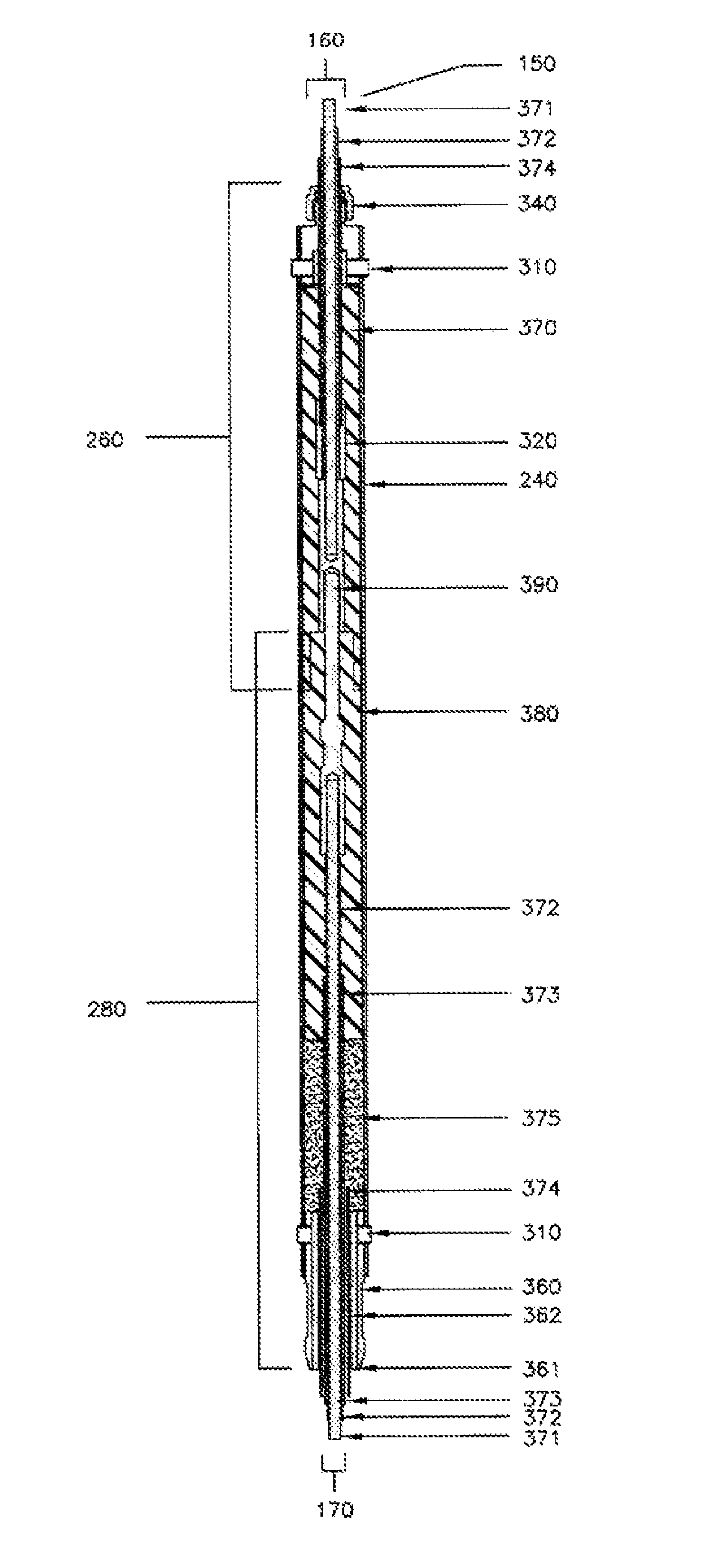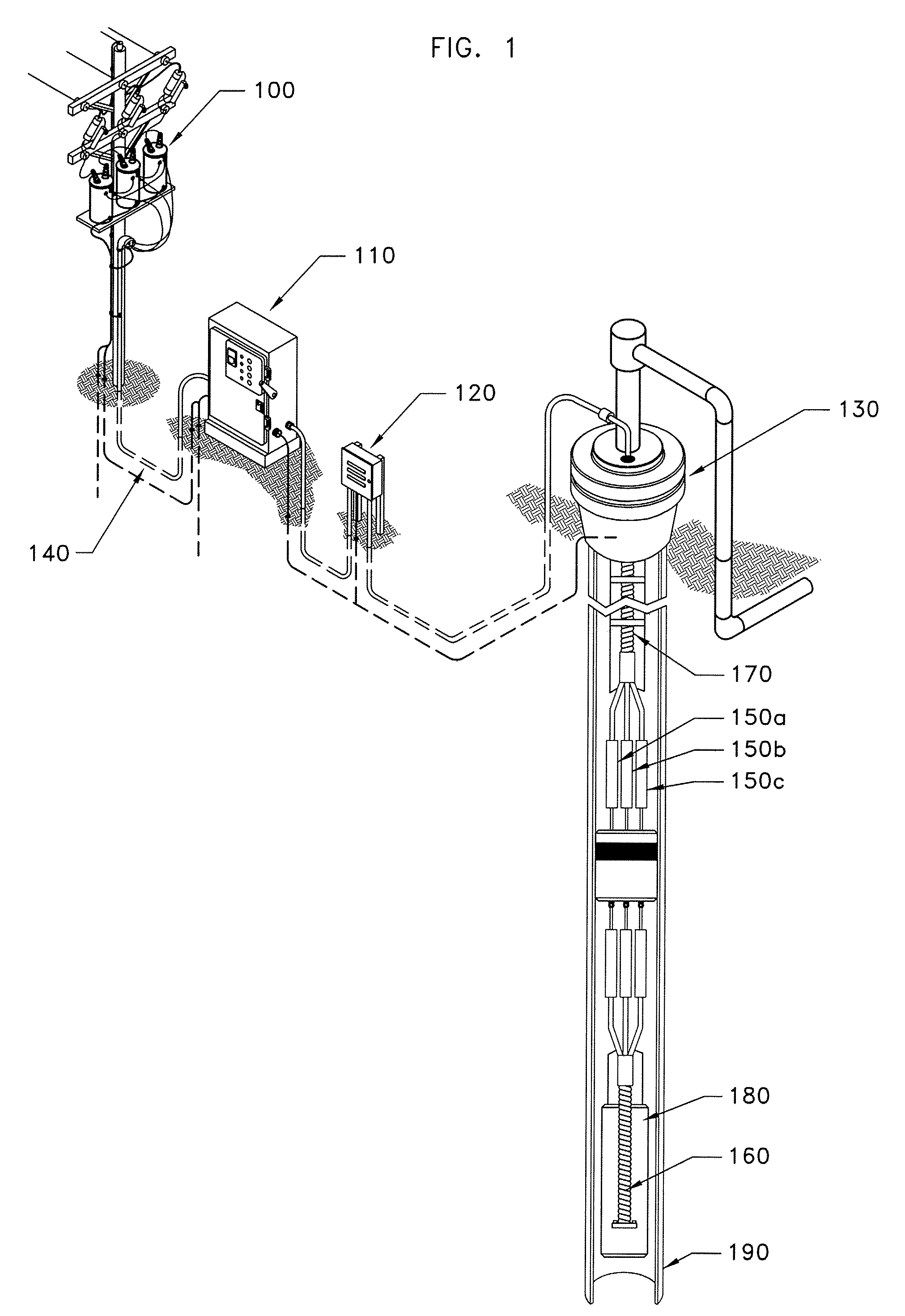Down hole electrical connector and method for combating rapid decompression
a technology of electrical connectors and down holes, which is applied in the direction of connection contact materials, borehole/well accessories, coupling device connections, etc., can solve the problems of electrical faults in the connector itself, explosions or fires in hazardous areas, and substantial difficulties encountered heretofor
- Summary
- Abstract
- Description
- Claims
- Application Information
AI Technical Summary
Benefits of technology
Problems solved by technology
Method used
Image
Examples
Embodiment Construction
[0026]FIG. 1 illustrates a preferred embodiment of the invention in which a remote surface power source 100 provides electrical power to down hole electrical equipment. The remote power source 100 is preferably a transformer bank, positioned on a power pole, which supplies power via cable 140 to motor control panel 110. Electrical cable 140 is typically formed of a medium voltage electrical conductor cable that runs from the motor control panel 110 in a known way to a vented junction box 120, and then into a wellhead barrier 130 of an underground well. Inside the well, cable 170 extends from the wellhead barrier 130 below to a position down hole where an electrical connection will be made with a cable using preferred and alternative embodiments of the present invention. The connectors 150a, 150b, and 150c that are shown in FIG. 1 are each individually shown in FIGS. 1-8 as connector 150. The connectors provide the means for electrically and mechanically connecting cable 170 and cabl...
PUM
 Login to View More
Login to View More Abstract
Description
Claims
Application Information
 Login to View More
Login to View More - R&D
- Intellectual Property
- Life Sciences
- Materials
- Tech Scout
- Unparalleled Data Quality
- Higher Quality Content
- 60% Fewer Hallucinations
Browse by: Latest US Patents, China's latest patents, Technical Efficacy Thesaurus, Application Domain, Technology Topic, Popular Technical Reports.
© 2025 PatSnap. All rights reserved.Legal|Privacy policy|Modern Slavery Act Transparency Statement|Sitemap|About US| Contact US: help@patsnap.com



